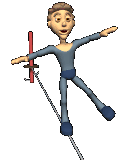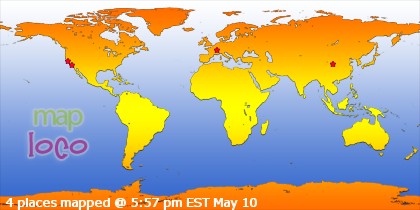For entertainment-starved frontier towns, the arrival of a traveling circus was a thrilling community event eagerly attended by almost everyone. Mary Chase Walker, one of San Diego’s first schoolteachers, described a Mexican circus that came soon after her arrival in the small town in July 1865:
It exhibited in the evening in a corral with high adobe walls, the company having no tents. The place was lighted by strips of cloth laid in cans of lard and then set on fire. The primitive lanterns were set on high posts and at best furnished a poor light. The spectators included nearly all of the population of the town who could pay the admittance fee of 50 cents. I think the Indians were admitted at half-price. The Americans and Spanish occupied one side of the corral, and the Indians squatted on the ground on the other. The performance on the trapeze and tightrope looked especially weird and fantastic in the smoky light of those primitive lanterns.
The first American circus came to town in January 1869 when George F. Ryland brought his “Exposition Circus” down the rough wagon road from Los Angeles for three performances in Old Town and one in New Town. A native of England, Ryland had been a performer since age 13 and could do it all: juggler, tumbler, clown and equestrian. His company was small — seven performers were listed in a San Diego Union advertisement — and all had multiple roles.
Equestrian feats seemed to be the highlight of the evening. Ryland performed on horseback as the “Juggler of Japan” and was joined by the trick riding of Elena Jeal in an act called “The Sylph and Highland Piper.” Three clowns, a pantomime act, and the talents of Mr. Horatio Nelson — who made “Music out of a few Pine Sticks” — rounded out the show.
Ryland’s small troupe would make several more stops in San Diego in the coming years, with their last appearance in December 1878. Larger companies began making the journey from Los Angeles to San Diego — many catering to a public fascination with animal acts. Professor Samwell’s Circus and Animal Show featured performing dogs, monkeys and goats. “Educated horses” were a highlight of the Sherman Circus, which appeared in 1881 and 1883.
In the mid-1880s, with the arrival of the transcontinental railroad, San Diegans saw their first nationally known circuses. The Ohio-based Sells Brothers circus would be the biggest entertainment event the town had ever seen.
The press agent for Sells arrived in San Diego on Sept. 25, 1886, and S.H. Barrett, the brother-in-law of the four Sells brothers, did his job well. The town was plastered with colorful posters announcing the upcoming spectacle. The next day, the Union described — in Barrett’s words, no doubt — the show’s famed wild animals: “the greatest zoological collection on earth, including all known quadrupeds, wild and wonderful, ever classified in zoology.”
Anticipation of the circus led to local controversy. When city schools officials announced classes would close for one day to allow children to attend the show, parents howled. One concerned father complained in a letter to the Union: “I have utterly failed to find the first thing about a circus that would recommend it to me as a means of entertainment or education for children. I should very much regret to have the impression get abroad, that as a community, we consider a ‘circus’ such a superior means of education.”
The school board replied that children would go to the circus anyway, leaving classrooms nearly empty.
“Necessity, not choice, rules the matter,” trustees declared.
A petition from nearly 400 Russ High School pupils sealed the deal by arguing that they would learn more zoology and natural history by studying the circus’ wild animals than weeks of schoolbook study.
The Sells circus train of 30 rail cars pulled into the depot at the foot of D Street (Broadway) on Thursday morning, Oct. 14. The parade from the station to the show site featured music from a loud steam calliope, along with a herd of elephants and camels. Performers marched through downtown to a vacant lot at Fourth and C streets, where an enormous canvas tent was quickly erected.
That afternoon and evening, several thousand local residents — including, presumably, most schoolchildren in the county — witnessed the first large-scale circus performance they had ever seen. An array of arena artists performed in three rings, the most astounding act of which seemed to be a giraffe and a pair of hippopotamuses running loose.
The next fall, the city greeted the John Robinson circus. A “hard crowd” of several hundred gamblers and confidence men were known to be accompanying the circus, warned the Union.
“The men have all kind of swindling games and devices with them and among the followers are some of the cleverest pickpockets and sneak thieves in the country.”
Locals braved the pickpockets and attended the show in huge numbers. The circus treasurer estimated 7,000 people were under the canvas for the Saturday night performance, perhaps one-quarter of the city’s population.
With the return of the Sells Brothers on Oct. 13, 1888, San Diegans saw their biggest circus yet. More than 40 70-foot-long railroad cars came to a stop near 26th Street and Logan Avenue, where a mammoth “Roman Hippodrome” tent the length of a football field was pitched. The traditional procession through town began two hours later, followed by matinee and evening shows.
The circus included 300 performers. Acrobats, clowns, jugglers, equestrians, trapeze artists and tightrope walkers performed in 90 acts in the tent’s three rings. The featured act was the marksman Capt. Adam Bogardus — the “champion wing-shot of the world” — and his three sons. But the public seemed just as fascinated by the “wild beasts” housed in 50 cages, including “the only pair of blood-sweating hippopotami on earth.”
Like most big railroad circus shows, the Sells would perform only one day before moving to the next town. “The great circus has come and gone,” the Union reported, “and thousands of people testify that the Sell Brothers have produced the best combination ever shown on the Pacific Coast.”
Thursday, February 25, 2010
....When circuses showed up, the whole town came out....
Labels: .circus.
Subscribe to:
Post Comments (Atom)














0 comments:
Post a Comment